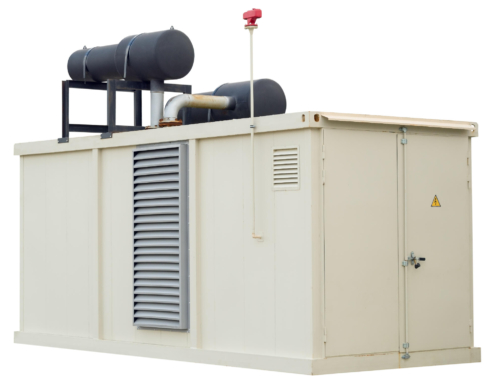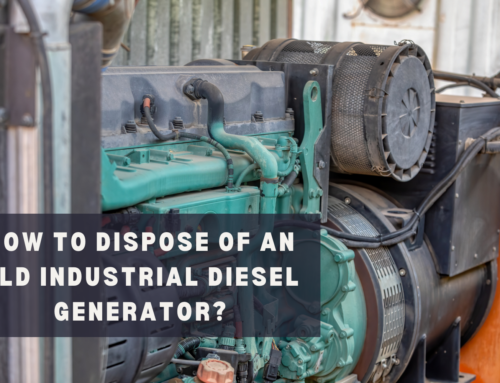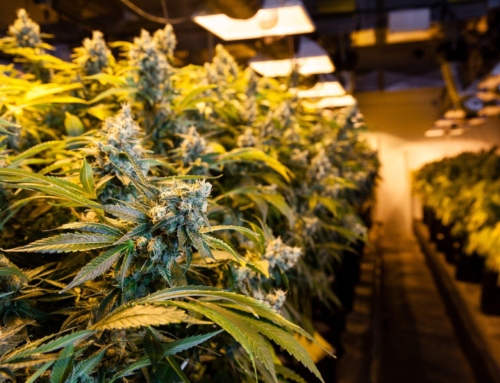Reciprocating engine generators power many of the machines and equipment that we rely on to power our business, factories, and even our homes. Despite their abundant use, many people are still very much in the dark about what exactly a reciprocating diesel generator is and how it works. Understanding the ins and outs of these essential machines could help you to better understand if your own reciprocating engine is working as it should be. This article will guide you through what a reciprocating diesel generator is and how it works.
Table of Contents
What is a reciprocating diesel generator?
The main component of a reciprocating diesel generator is a reciprocating engine. also known as a pistol engine. A reciprocating engine is a heat piston engine that uses one (or multiple) back and forth movements (known and reciprocating pistons) to turn pressure into a rotating motion. When used in a diesel generator, the reciprocating engine is fueled by diesel. Reciprocating engines can also be powered by natural gas, propane or gasoline; however, diesel reciprocating generators are the most dependable and cost-effective option.
Reciprocating diesel generators provide an alternative to more traditional electricity generation by using integrated systems to produce combined heat and power. They can also provide the onsite generation of electricity, mechanical power and waste-heat recovery for various applications.
What are the benefits of a reciprocating diesel generator?
Reciprocating diesel generators are one of the most widely used power sources across the UK- with over 200 million units being produced each year!. Their popularity is partly due to their impeccable responsiveness and dependability. Despite the ever-growing demand for water, wind and solar-powered electricity to overtake our use of fossil-fueled generators, it seems that the benefits of reciprocating diesel generators outweigh those of more sustainable options.
Grid efficiency of reciprocating engines
Reciprocating engines play a huge role in improving the efficiency of our national power grid. Reciprocating generators can reduce high demand on the grid by temporarily producing power for one individual electric consumer, or for a group of consumers. This provides consumers with the opportunity to reduce their dependence on the power grid when it is in high demand. The most common time for this is on a hot summer day when the prices of grid power tend to increase and the power itself becomes less reliable.
Reciprocating generators also offer the option to be used in combined heat and power (CHP) plants. The highly efficient CHP uses the engine’s exhaust heat for useful purposes such as the heating and cooling of buildings. If left unused, this heat would simply escape into the atmosphere, contributing to greenhouse gasses. CHP uses one fuel for two purposes, which is energy efficient and can reduce carbon dioxide emissions.
Reliability and safety
Reciprocating generators offer black-start functionality which is a feature that works to keep the electric grid safe and reliable. Black start technology is used when a power plant shuts down (usually due to malfunction or crisis) and requires an external power source to get it started again.
When a power outage occurs, the plant cannot rely on the grid to provide power so instead, the plant operators will turn to onsite diesel reciprocating engines. These power generators can be quickly started up to provide the energy that is needed.
Furthermore, reciprocating engines can be used at nuclear power plants to provide energy that is needed to shut down and maintain a nuclear reactor in the event that normal power is lost, a coolant accident occurs, or if there is any other fault in operation.
Pros and cons of a reciprocating engine
As well as the main advantages that reciprocating diesel engines have for our grid efficiency and safety, the use of a reciprocating diesel engine could pose a number of other benefits to your power generation.
Pros of a reciprocating diesel generator
- Reciprocating internal combustion engines provide electricity quickly.
- Reciprocating generators have quick startup capabilities.
- They can operate at partial loads.
- A reciprocating engine’s exhaust heat can be used to produce hot water.
- There are a wide range of sizes available for different site requirements.
- They can start up even when the grid does not have the power to keep your business running no matter what.
- These generators use significantly less water to run than other methods.
Cons of a reciprocating diesel generator
- They produce high emissions.
- If heat is not used, the reciprocating engine must be cooled.
- They are fairly costly to maintain.
- Reciprocating generators produce low-frequency noise.
How does a reciprocating diesel generator work?
Reciprocating diesel generators work by using the expansion of gases to drive a piston that sits within a cylinder. The generator then converts the piston’s movement into a circular/rotating movement to generate power. Different types of reciprocating generators can be categorized by the number of piston ‘strokes’ that are required to complete a combustion cycle.
The four-stroke reciprocating internal combustion engine
The four-stroke, or four-cycle, reciprocating engine is the most commonly used type for power generation. The four strokes that are involved in the operation include intake, compression, power, and exhaust. The intake stroke will expand the combustion chamber that sits within the cylinder, which will then draw in an air/fuel combination. The compression stroke will then compress this mixture and increase the energy potential.
Two-stroke reciprocating internal combustion engine
Much like a four-cycle generator, a two-stroke will complete a cycle of exhaust, intake, compression, and power. The main difference is that in a two-stroke engine, the end of the combustion stroke and the start of the compression stroke occur at the same time, with the intake and exhaust strokes also occurring at the same time as each other. This allows for just two strokes of the piston to be required for the cycle to be completed. Two-stroke engines typically have fewer parts than four-stroke engines so are much lighter and smaller in size. These generators are used mainly to power smaller machines or vehicles, such as cars or motorbikes, rather than to generate power on a larger scale.
We have an excellent range of reliable, refurbished generators available on our website. Buying second-hand means that you can save on the generator that you buy and our team of experts will be on hand to give you all the advice and guidance that you need in order to make a successful purchase.






![How to Calculate the Efficiency of a Diesel Generator [With Formula]](https://swiftequipment.com/wp-content/uploads/2023/04/diesel-generator-500x383.jpeg)
Leave A Comment